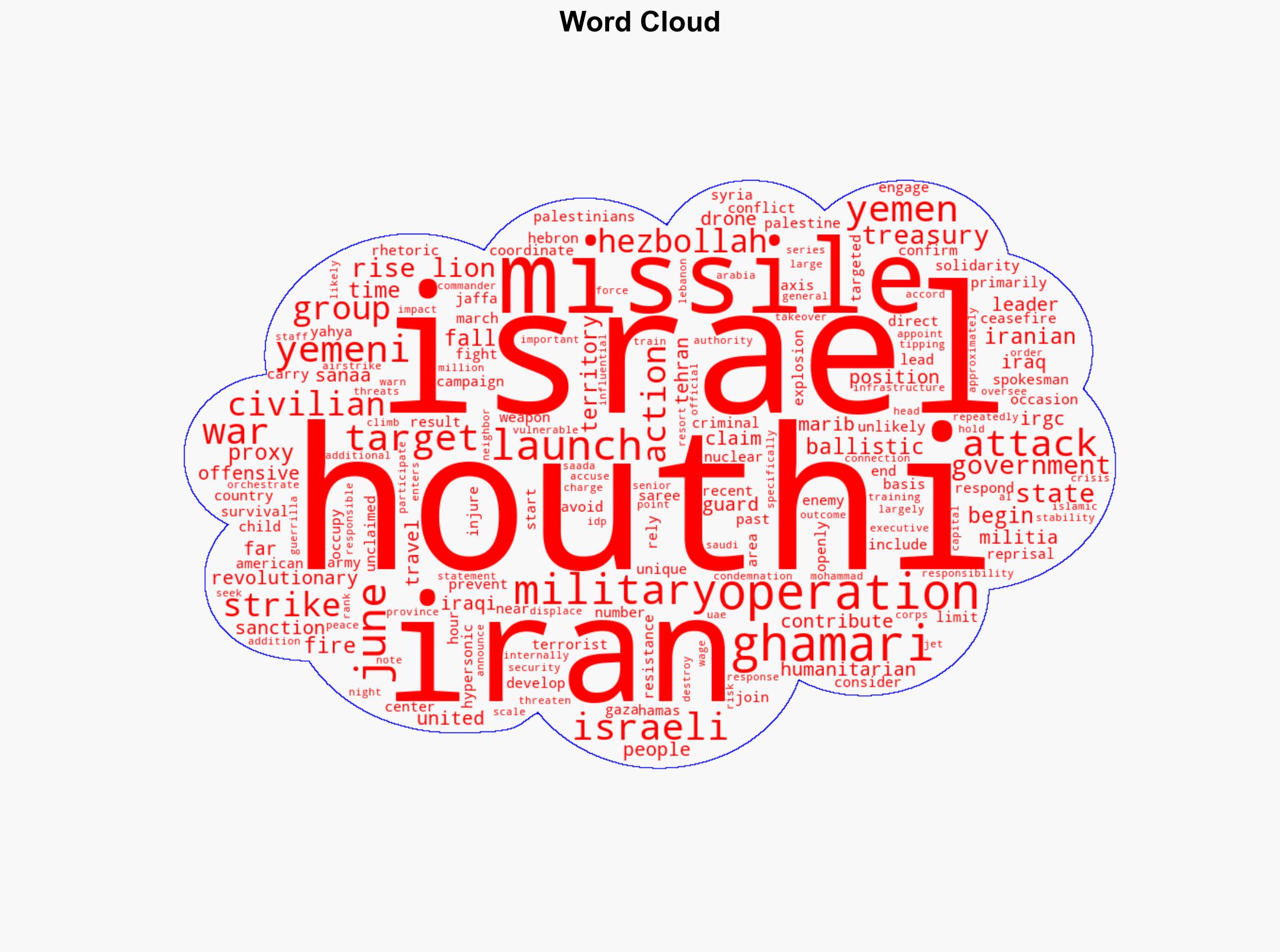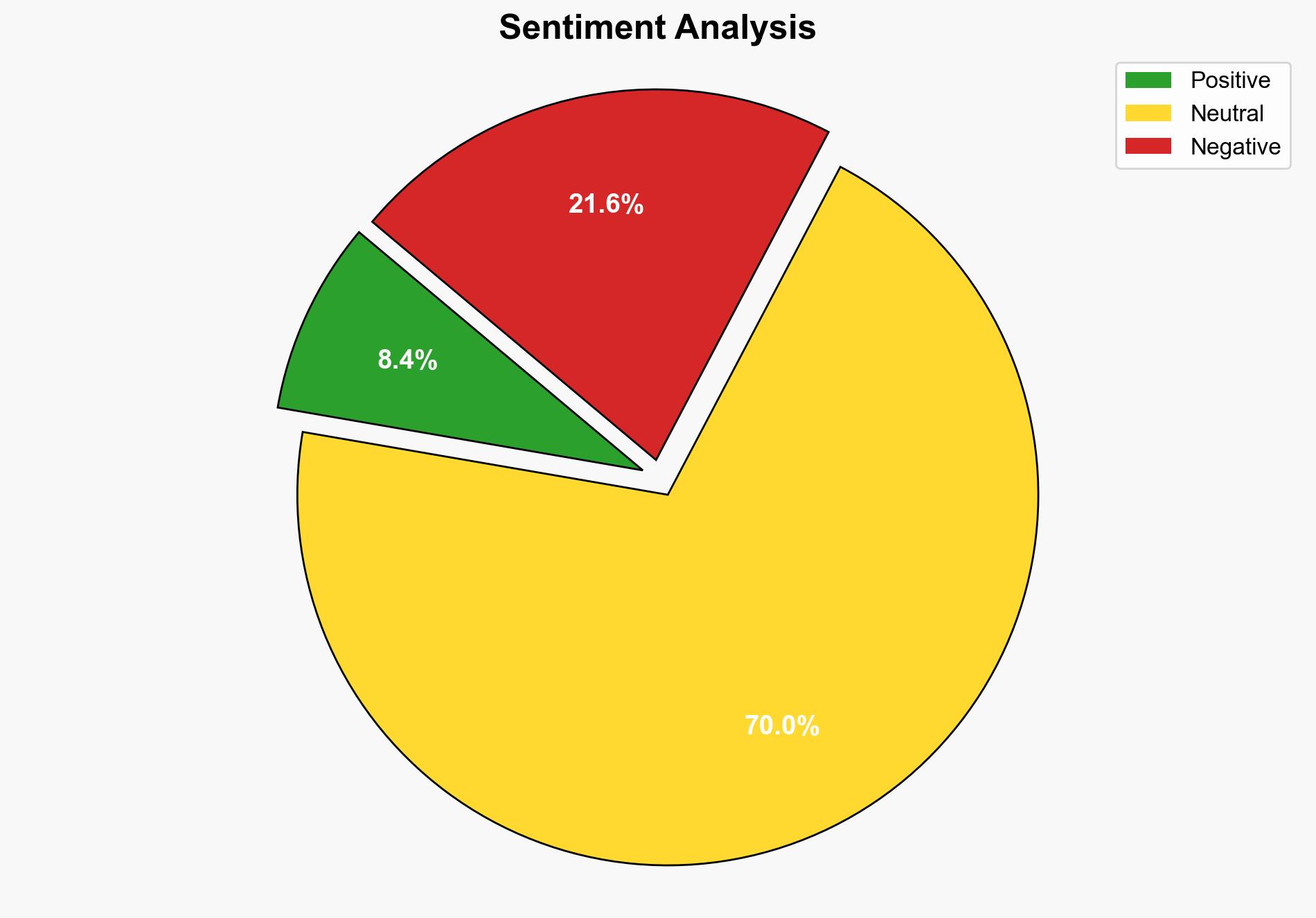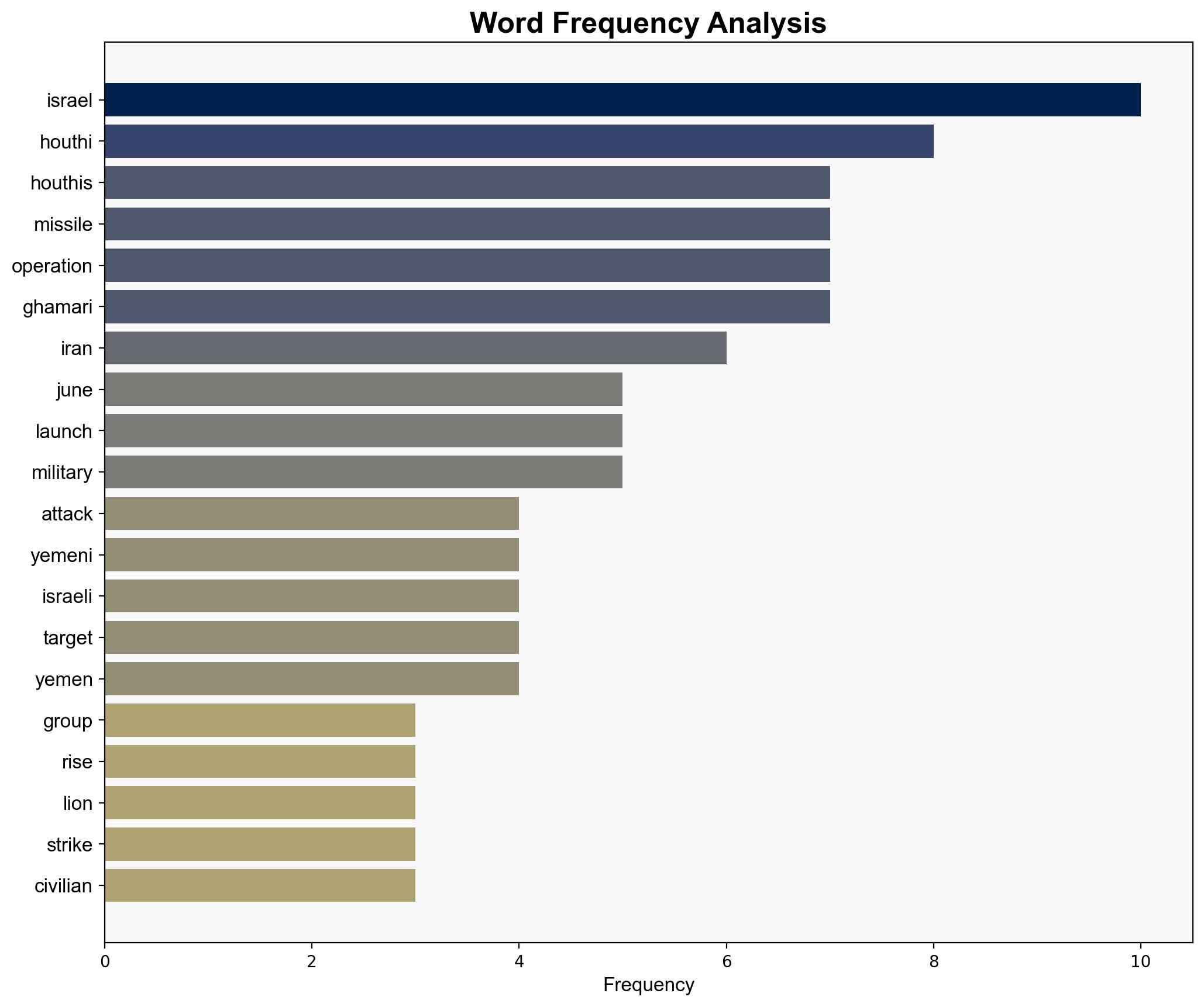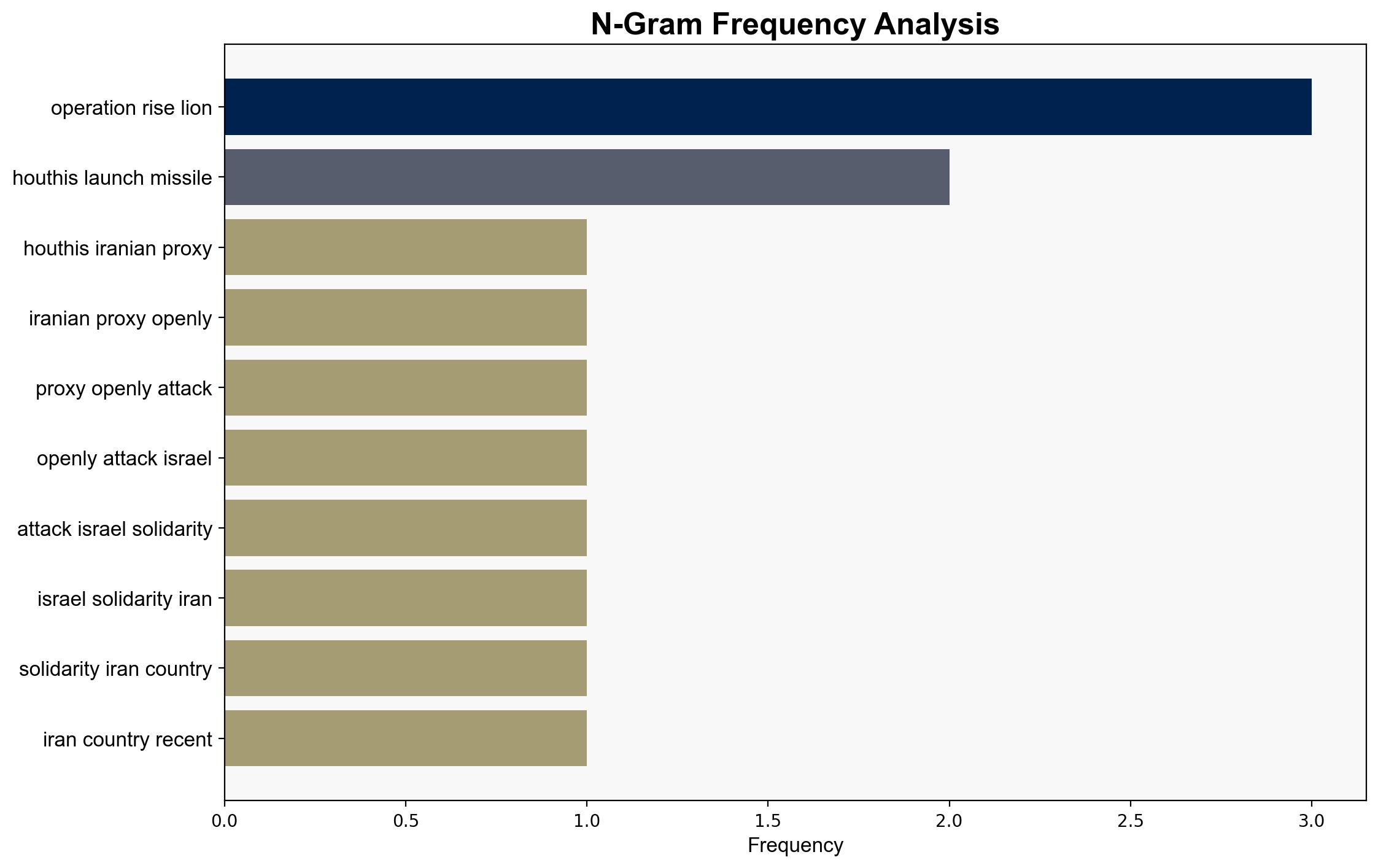The Houthis join Irans attacks on Israel – Longwarjournal.org
Published on: 2025-06-18
Intelligence Report: The Houthis join Irans attacks on Israel – Longwarjournal.org
1. BLUF (Bottom Line Up Front)
The Houthis, an Iranian proxy, have escalated their involvement in the conflict against Israel by launching ballistic missiles and drones. This marks a significant shift in their operational scope, aligning more closely with Iran’s strategic objectives in the region. The implications of this development include heightened regional instability and potential for broader military engagement. It is recommended that monitoring and defensive measures be intensified to mitigate further escalations.
2. Detailed Analysis
The following structured analytic techniques have been applied to ensure methodological consistency:
ACH 2.0
The Houthis’ actions suggest a coordinated effort with Iran, likely intended to pressure Israel and its allies while demonstrating solidarity with Iran’s strategic goals. This hypothesis is supported by the timing and nature of the attacks.
Indicators Development
Increased digital propaganda and travel patterns between Yemen and Iran indicate a strengthening of operational ties. Monitoring these indicators can provide early warnings of future attacks.
Narrative Pattern Analysis
The Houthis’ rhetoric has increasingly mirrored Iranian narratives, suggesting a deliberate attempt to align ideologically and operationally with Tehran’s objectives. This alignment is likely aimed at bolstering recruitment and incitement efforts.
3. Implications and Strategic Risks
The Houthis’ direct involvement in attacks on Israel introduces new risks, including potential retaliatory strikes and increased regional tensions. This development could lead to a broader conflict involving multiple state and non-state actors. The risk of cyber operations targeting critical infrastructure in response to military actions is also elevated.
4. Recommendations and Outlook
- Enhance intelligence-sharing mechanisms with regional allies to improve situational awareness and response capabilities.
- Strengthen defensive measures around critical infrastructure to mitigate potential retaliatory cyberattacks.
- Scenario-based projections:
- Best Case: Diplomatic interventions de-escalate tensions, leading to a ceasefire.
- Worst Case: Full-scale regional conflict involving multiple state actors.
- Most Likely: Continued sporadic attacks with intermittent diplomatic efforts to manage tensions.
5. Key Individuals and Entities
Yahya Saree, Mohammad al-Ghamari
6. Thematic Tags
national security threats, cybersecurity, counter-terrorism, regional focus




